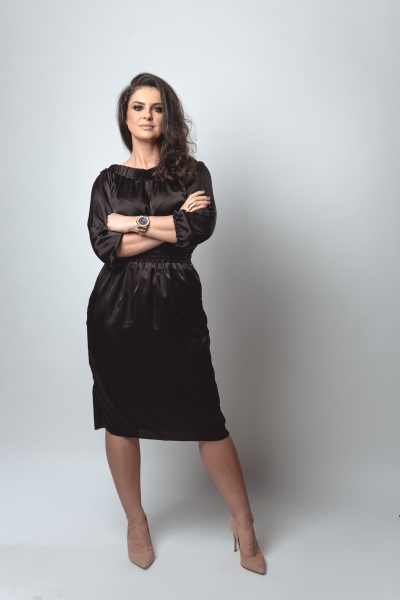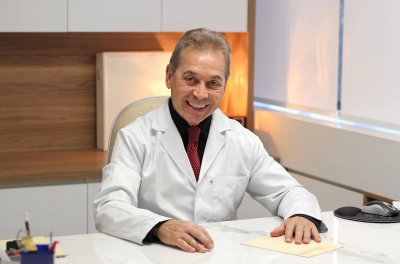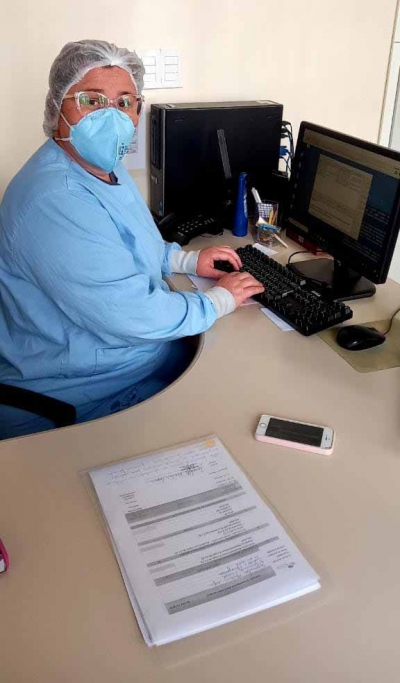Discovery and Revolution in Dentistry
Immediate Dentoalveolar Restoration Technique developed in Caxias do Sul by the dentist José Carlos Martins da Rosa reaches the world and revolutionates Implantology


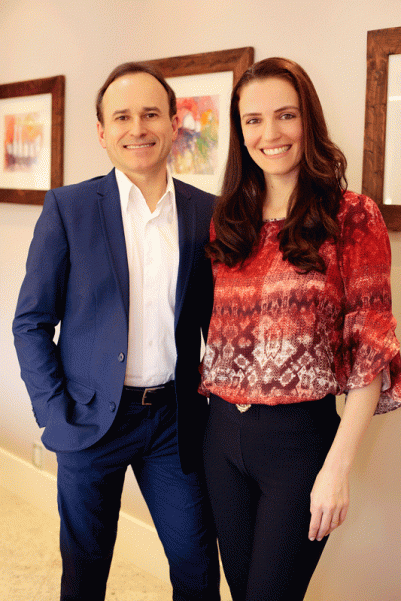
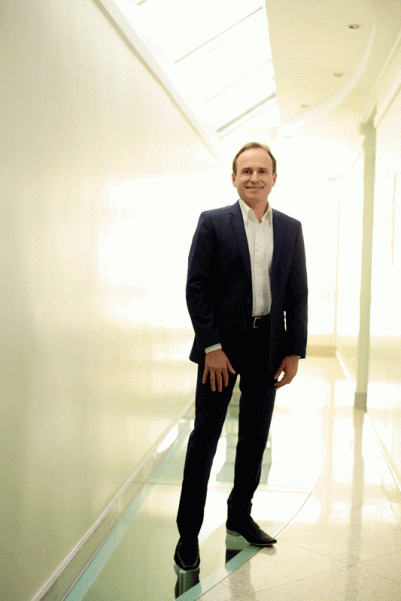
"I feel blessed, and with an immense responsibility, "says José Carlos da Rosa, with the characteristic simplicity of a great man. Simplicity, humility and brightness in the eyes (typical of those who stand out in their areas of expertise because they have the opportunity to discover facts or develop extraordinary scientific techniques) are evident. The dentist with 30 years of experience, professor and entrepreneur, author of the Protocol of the technique of Immediate Dentoalveolar Restoration (IDR), which is revolutionating implantology worldwide, weapon be thankful for "being chosen" to have an insight So important. After having his technique disseminated in several scientific articles in segment specific magazines of international reputation, having published his methodology in his own book (Immediate Dentoalveolar Restoration – implants with immediate load on the relarive alveolas, by Ed. Santos, 2010), being translated into Spanish, English and Mandarin, the researcher considers that the time has come to share this great discovery beyond the scientific community. "Our main goal is to contribute to the health of patients. They are the target of all our studies and efforts, and the main motivation of our work, I believe, that if people have more information about this methodology they will end up looking for the professionals who uses of the IDR technique, because it is simpler, because it provides predictable results, and provids a quicker improvement to patient, "explains the researcher. Our goal in disseminating the methodology is to make it possible to apply to the largest number of people around the world, benefiting the patient, which is our focus ", concludes. Next, NOI proudly exposes the profile and arguments of this health entrepreneur, who set up and manages in Caxias do Sul, Rio Grande do Sul, one of the most modern and equipped dental treatment centers in Brazil called Rosa Odontology. José Carlos da Rosa integrates an unrivalled team of specialists and professionals from dental health. The singular environment was also the scene of the discovery of the important protocol of the IDR, conceived and signed by it, its main precursor and diffuser around the world.
NOI: What does the IDR technique consist of and how does it differentiate from what was being done so far in relation to dental implant techniques?
José Carlos Martins da Rosa: The IDR technique was developed in 2006, from the necessity that we had to solve a health and aesthetic problem of the patient. Problems of this nature (a condemned tooth to extraction, associated with the lack of gingiva and compromised bone structure) have long been resolved with another treatment. It was a longer, more costly treatment, with more morbidity, that were more invasive interventions in traditional treatments. The IDR technique came to simplify all this. In summary, if the patient has a missing tooth, with alveolar involvement associated not only with the bone tissue involved in the tooth, but also with the gingival tissue, we propose the extraction of the tooth, the immediate installation of an implant, the construction of a temporary crown and the reconstruction of lost tissues, whether bone or gengival, in a single procedure. In other words, we made it possible for the patient to install the tooth for one procedure. If he arrived in the office with such a problem, he already comes out with everything resolved, in a single session. The morbidity (pain) is much lower, the cost is lower, and, considering the biological part, the IDR technique will bring a more positive result than the other procedures previously cited and reported, and that we have been doing in our clinic, based on the scientific literature.
How can IDR be more accessible to the patient if more procedures are made in a single intervention?
Before the development of the IDR technique, we extracted the tooth, waited more or less a period of 60 days, did a bone reconstruction, using the autogenous bone (collected in the patient itself) or an artificial bone (which we technically call biomaterial). After this reconstructive phase, we waited on average for a period of six months. Then we installed an implant and waited another six months for osseointegration of the implant so we could install the final tooth. These three treatment steps could at most be concentrated in two steps. Today, by using the IDR technique, we manage to do all of this in a single procedure. Previously, due to the number of interventions, the procedure was more expensive. Today we have achieved with this methodology to do everything in a single step (already installing the tooth immediately), which reduces the cost of treatment, because the patient will not go through several stages. It reduces patient discomfort, and we can reconstruct both bone and gum, and it is possible to put the new tooth, all in a single intervention. That came up against what we dentists are--we're looking for. The main beneficiary by IDR is the patient, because he suffers much less. And another important factor is that the intraoral donor area that we used to collect bone graft before, presented greater postoperative discomfort. Today we access the region behind the last teeth of the jaw that presents much better postoperatively. The cicatricial response, both of the bone and gingival part, also occurs in a faster and more effective way. The aesthetic result is very satisfactory. In fact, it is excellent, both with regard to the gingival tissue part and the dental part.
How did you think of that possibility?
This insight happened when there was one case with a patient who had a compromise of one of the bony walls involving to the tooth. He had a trip planned out of the country for alonger time. So, he crashed his tooth just before travelling. He had an important bone loss, and at that time (in 2006), we were already working with the collection of this bone graft (removed from the posterior region of the maxilla) for other applications. We needed to solve the patient's situation in a single intervention, because he couldn't postpone the trip. We explained him that there is an opportnity to fix it but this procedure is a new, and he agreed to be part of this study. We performed this procedure by collecting this bone from the maxillary tuberosity. In our first case, the answer was extremely positive. After the patient returned to Brazil, we observed the case for a long period. After this careful observation we realized that the technique was positive and we started to apply for different clinical situations with different complexity, having the same results. We have always been obtainig excellent results in relation to the aesthetic and the biological part. Out of it, we understood that we had developed something very important for the world scientific community, and we began to work on the scientific validation of its protocol.
Did the discovery and development of IDR happen in Caxias do Sul?
This technique is genuinely from Caxias do Sul. From the moment we had the first case, and wehad been observing the following cases in which we were applying it, we began to realize what we had developed. We realized the benefits that the technique could provide not only to our patients, but to patients around the world. After passing through this period of sedimentation of the technique and follow-up of these patients, we understood that this methodology should be disclosed outside the scope of Rosa odontology clinic to reach a larger number of patients, so that they could also have the same kind of result, with more simplicated treatments than what we've been doing.
Was the main finding in relation to the regenerative capacity of the bone that you collect to perform the graft?
This bone that is collected from a specific region that is behind the last tooth above, which we call "tuberosity" is a very rich bone in cells. It promotes an incorporation of the graft into the receptor much more effective, much faster, with a more dynamic process, leading to the stability of the gingival tissues over time. With the biomaterials we were working with before and offered us by denistry companies, or with the autogenous grafts collected from other areas of the mouth, we could not achieve the same stability of the gingival tissue over time. Then we started to increase this number of indications for other clinical situations of our patients with very similar results.
When the first cases show satisfactory results, how was the process of dissemination of the technique and the acceptance of IDR in the professional environment?
Our initial purpose was scientific proof, through the publication of a work with a controlled methodology. Only then would we have the support to present the new technique to Brazilian dentistry. After publishing some articles in international journals, and achieving the "endorsement" of the scientific community, we work intensely in disseminating the IDR technique in the four corners of Brazil, in various events and segments of the dentistry, until we could prove to our colleagues that this methodology could bring a satisfactory result and in a much shorter time than the others methods. From then on, we started to develop Immediate Dentoalveolar Restoration (IDR) courses. These courses were initially conducted within the study center of Rosa Odontology, and later in several places in Brazil. Today, we have in Brazil more than 1,000 colleagues trained to perform this procedure on their patients. The most benefited are the patients, not the professionals. The professional is a mean to apply this methodology to a patient. The methodology ended up being recorded in a book, which was published in the Portuguese language in 2010. We also published in the Spanish language in 2012, in 2014 we published in English and, in 2015, we published in Mandarin. From the publication of this book in several languages, the knowledge about a technique has gained a very large scope. We were able to disclose first to the scientific community, through not only the book, but also in several articles published internationally. Then we began to share the technique by traveling the world to give classes in several universities. The technique was first known in South America. Then we had an excellent opening in the United States, where we have already taught classes in more than 10 universities. From then on, we were invited to disclose this methodology at the North American Congresses, which turned a milestone for us. We had no idea the repercussions would be so great. We always find that the information would be restricted to the practical dental world, but we are faced with a situation where the news has spread to the scientific community in general. And then we started spreading in Europe, in Asia, in every corner. Today we already have courses of the IDR technique in 35 countries. Spreading the methodology is a hard work, mainly because we have to travel a lot. But gradually we are achieving that these colleagues around the world who apply to IDR come to carry out the courses here, in the structure of Rosa Ondontology in Caxias do Sul, Brazil.
Are there people trained to teach the technique in the world?
Today we have several professionals that are replicating the technique not only in universities, but in centers that make the dissemination of the technique in a theoretical and practical way. We also coordinate research in some universities around the world, which are subsequently followed by local teachers.
Is IDR already being taught to dentistry academics at undergraduate level?
This methodology is more focused in the area of dentistry that has passed the level of graduation, with professionals who are conducting postgraduate or specialization, for example, because it is necessary to have experience in the area of implantology, prosthesis, periodontics, so that the professional can make use of the technique in a very safe way on patients. The professional must have experience with implants to know how to use of the technique.
Is it a technique that needs to be necessarily prescribed by the dentist or the patientcan ask for IDR?
I believe today that if people have more information about this methodology they will look for professionals who can use this technique, because it is simpler, it provides better and faster results. Our goal is to disseminate the methodology to make it works for the largest number of people around the world, so the patient benefits, who is our focus. But the prescription of the use of the technique or not depends on a very careful diagnosis, which can only be performed by the trained professional.
When you realized that you had discovered the IDR, what was your feeling?
I think it was a grace. A divine gift. I felt very happy to have been chosen to do this, and at the same time, I felt with enormous responsibility. It is no use to be chosen to do certain things and to stay with this occult knowledge, just for you. Of course, this ends up interfering in our lives, because there are many business trips and we stay much time away from our families. But we have this responsibility, to make the IDR methodology available to by as many people as possible around the world. This due to its simplicity, its practicality, and its result being very predictable, more than other methodologies applied so far, based on the pre-existing literature. It is a very difficult mission, but I am an extremely happy person to have been graced with this gift (which I consider it). It is challenging, because we have to keep ourselves very updated, we have to be present in many events around the world, and we know that is not a very simple task.
In addition to being a dental professional, you are an entrepreneur. Is it possible to be innovative in this segment too? How to innovate in such a traditional environment?
The Rose Odontology as an undertaking itself was born from two dreams, mine and my wife’s Ariádene. We always thought to offer the patient a differentiated structure, with a multidisciplinary team, that could meet all needs in a single location. To allow the patient to do not only a complete and differentiated treatment, but that the physical structure could make him feel at home. Our dream was old, and it was fed by the arrival of other colleagues who are now part of my team, especially Marcos Fadanelli, who is part of the clinic project since its inception. Besides, I've been connected to the teaching area for many years. Before working in Rosa Odontology, I always had the desire to pass my knowledge to other people. So our structure was all designed to combine these two things: to provide a different treatment for the patient and to promote courses and trainings for colleagues. We have a hospital surgical center, which offers all possible safety, so that the patient can do the procedures with sedation, or with general anesthesia. With this structure, we are quieter in relation to what we can offer the patient. One thing is you do a complex procedure in a dentist chair, another, very different, is to have all the support that a surgical center can offer, and with the support that a medical and nursing team. If any emergency occurs with our patient, for example, we know what to do and we have all the resources to proceed. This achievement is another thing that cheers me up! We have managed to structure a place where we can serve patients safely and with the best existing treatments for the demands of dentistry. And combining all this with a teaching structure, it was a dream conquered.
Why create a center of this magnitude in Caxias do Sul, in Serra Gaúcha?
I came to Caxias do Sul on 1992. Since then we started working here, we realized that we lacked a reference at the level of physical structure. We have excellent professionals here in the region, but there was not a site that was reference in structure.It was in this sense that we elaborated the project and developed all the physical part of the constrution, which took about four years to get ready, until we could make the Rosa Odontology born. In a very judicious way, and very rigorously, we work in all areas, speaking specifically of the clinical and technological part. We follow a very large technical rigor in the preparation of the surgical center respecting all the safety standards necessary to have a surgical center with the accreditation of Hospital Dia. It was a dream we cultivated for a long time and we were able to accomplish in 2006. Exactly this year, in which we began to act here, I had the insight of the technique of immediate Dentoalveolar restoration.
From all these initiatives, you have generated a very important knowledge for the scientific community. Does this indicate that we are in a region and country with the best professionals, or would you be a rare exception?
The Brazilian dentistry itself, today, is the barn of the best dentistry in the world. We have creativity and skills. Although North America has many technological resources, Brazilian dentistry is recognized as the best current dentistry. Today, we can quickly gain access to the latest technological resources, adding to this all the creativity and skills of the Brazilian dentists. So today, we are a reference to the world. Our technical capabilities, however, need to be constantly renewed. This is not a simple thing because it demands time and a lot of investment. But, although it's not easy, that's the thought of our team. A team that worked from the beginning together, with the same thought, always seeking to keep up to date with what's new in technology and techniques. This is what Rosa Dentistry has today to offer, a differentiated treatment in all segments, not only in the physical structure, but also in the technical and technological part. In addition, all professionals are, in one way or another, involved with teaching and scientific research.
What are the next steps as a researcher and a professional?
Since its development, the technique has had many developments. We have written our book, as well as chapters of books by other national and international authors and published many articles in high-impact international scientific journals. We are currently focused on this research area. We are coordinating and developing several research projects in universities around the world. We will then go to these universities to follow up on these projects. Teachers and co-workers also come to Caxias do Sul often so that we can make these discussions here. The project took much larger dimensions than we had imagined. So it is a project that still has a long way ahead, and we follow with our researches in order to disclose that this technique, genuinely from Caxias do Sul, can be applied by any professional around the world with the same level of result.
How can the dentist's work impact the community it is located?
Dentistry has changed a lot for the recent years. Today we work in a different way than 10 years ago. That's natural. Ten years from now on we'll talk about what is happenning today. However, nowadays, dentistry is much broader. Today we can do a job of promoting the health of the patient in a more complete and integral way. We can assess and diagnose patients' problems more accurately, because today we have several imaging exams that favor us in diagnosing and planning, and greatly facilitate the execution of procedures. It is possible to transform patients without teeth into toothed patients in 24 hours, for example. With all available resources, today a dentist can change the self-esteem and life of a patient. The important aspect is that usually the patient seeks the professional to solve a specific problem of a single tooth, but in many situations the patient is seeking to solve his health in an integral way. The mouth is the gateway to various problems of our systemic origin. So, it is the dentist's goal today to explain to the patient in a simple way how he could change habits to improve his quality of life (hygiene, maintenance, healthy attitudes). Today, in addition to performing a restorer treatment, functional and aesthetic procedures, we also promote integral health. Our life mission as health professionals is to be part of the improvement of social conditions in our country and to improve the access to advanced treatments.
Biography | José Carlos Martins da Rosa is originally from São Vicente do Sul, Rio Grande do Sul. He is married to Ariadene Cristina Pértile de Oliveira Rosa, also a dentist, by his words " a partner, a acollaborator and an artisan of the happiest moments of his personal life and professional career". He graduated from the Federal University of Santa Maria/Rio Grande do Sul (UFSM) in 1988. So 2018 marks 30 years of work experience. He specialized in Periodontics by the Paulista Association of Surgeons – Dentists (APCD), Bauru/SP, in 1991. He became specialist and master in prosthesis by the Center for Dental Research São Leopoldo Mandic, Campinas/SP, in 2005 and currently, he is a PhD in implantology by the same institution. He is the author of the book " Immediate Dentoalveolar Restoration: Immediately-loaded Implants in Compromised Alveolar Sockets" by Ed. Santos, in 2010, with Portuguese edition, in Spanish (2012), English (2014) and Mandarin (2015). It also subscribes to several published scientific articles. He is a partner of Rosa Odontologia, a dental center with modern facilities strategically allied to important hospital resources, its profile and structure were designed for the development of a work committed to biosafety and high technology. The clinic also has a professional improvement and qualification center consisting of an auditorium and an integrated practice for events, immersion courses, study groups and research. Renowned professionals from various places in Brazil and abroad, have taught courses and workshops in the environments of Rosa dentistry.
Read this content in portuguese:
https://www.revistanoi.com.br/editorias/legado/descoberta-e-revolucao-na-odontologia_1.html

